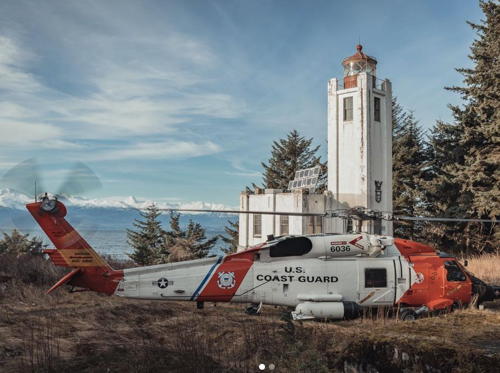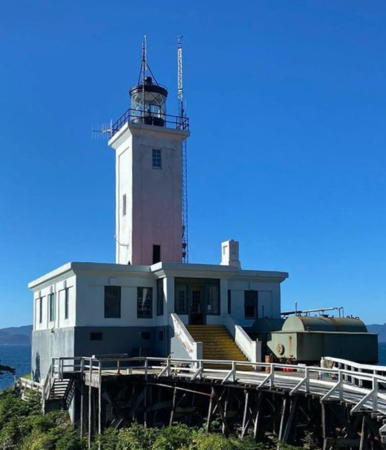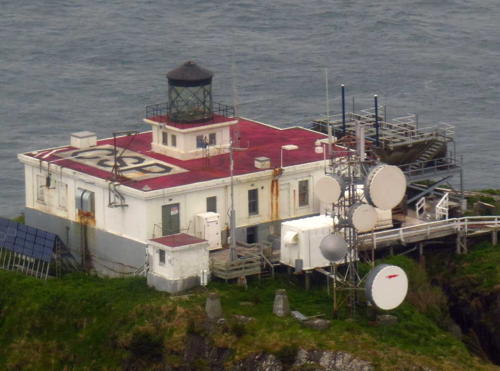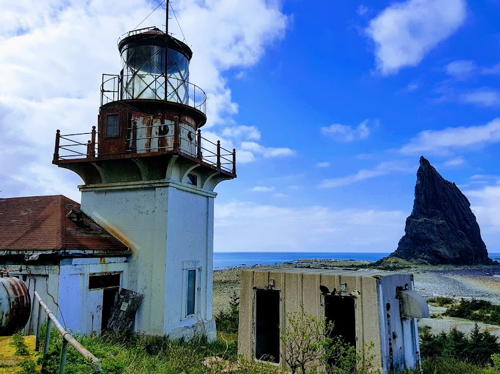The United States of America is a federal union of 50 states and a capital district. The state of Alaska occupies the northwestern corner of North America, separated fron the rest of the continental United States by Yukon Territory and British Columbia, Canada. Alaska was part of Russia's claim to northwestern North America as early as 1734, and the first Russian settlements in Alaska date from the late 1700s. The U.S. bought the territory from Russia in 1867. Initially governed as a military district, Alaska became an incorporated territory in 1912 and was admitted to the union as the 49th state in 1959. Alaska is by far the largest U.S. state but it is sparsely populated, with a population of 736,000 in the 2020 census.
There were no lighthouses in Alaska until late in the 1800s when the discovery of gold in Canada's neighboring Yukon Territory brought a rush of settlers and commerce to the southeastern coastal region. Eldred Rock Light is the only survivor from the first series of quickly-built wooden lighthouses. The other early lights were replaced in the 1920s and 1930s by an interesting group of Art Deco concrete towers like the Tree Point Light shown at right. Historic lighthouses are found along the Inside Passage behind and between the islands of the southeastern "panhandle" region and along the south coast facing the Pacific Ocean. There are no lighthouses and few navigation lights of any kind on the state's west coast facing the Bering Sea and its north coast facing the Arctic Ocean.
Alaska is the only U.S. state not divided into counties, but the state legislature has established boroughs to provide regional government in some of the more populated areas.
Navigational aids in the United States are operated by the U.S. Coast Guard Seventeenth District with Aids to Navigation teams in Sitka for the panhandle region and Kodiak for the south coast, but ownership (and sometimes operation) of historic lighthouses has been transferred to local authorities and preservation organizations in many cases.
ARLHS numbers are from the ARLHS World List of Lights. Admiralty numbers are from Volume G of the Admiralty List of Lights & Fog Signals. USCG numbers are from volume 6 of the U.S. Coast Guard List of Lights.
- General Sources
- Alaska Lighthouses
- Excellent photos and informative accounts from Kraig Anderson.
- Online List of Lights - U.S. West Coast
- Photos by various photographers posted by Alexander Trabas. For Alaska the photos are by Michael Boucher and Rainer Arndt.
- Lighthouses in Alaska
- Photos by various photographers available from Wikimedia.
- World of Lighthouses - Northwest Coast of U.S.
- Photos by various photographers available from Lightphotos.net.
- U.S. Coast Guard Navigation Center: Light Lists
- The USCG Light List can be downloaded in pdf format.
- GPSNautical Charts
- Navigation charts for Alaska.

Tree Point Light, Revillagigedo Channel, June 2022
Google Maps drone view by Johnny Rice










